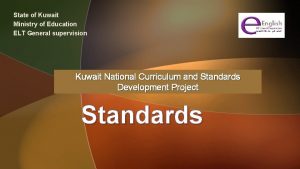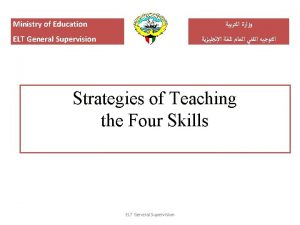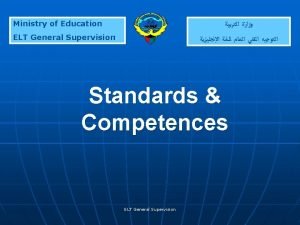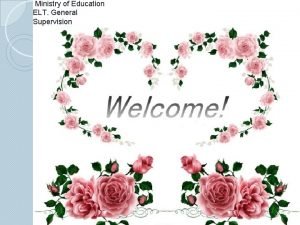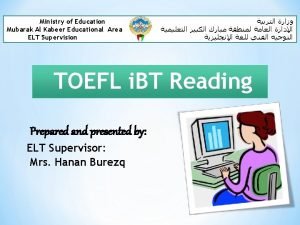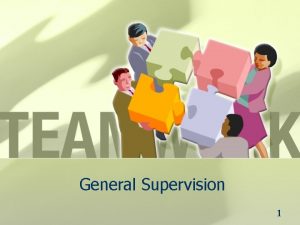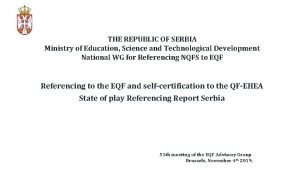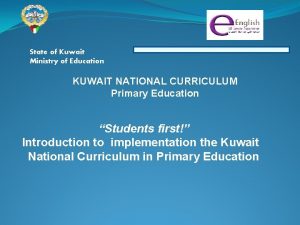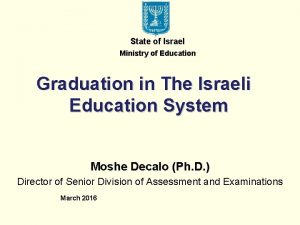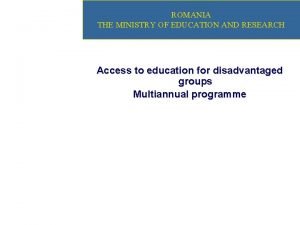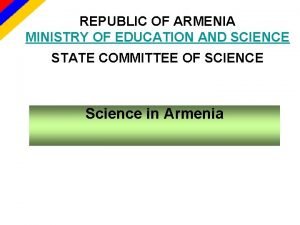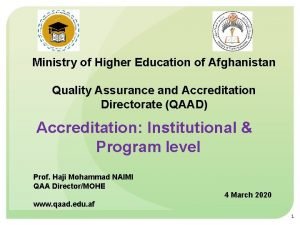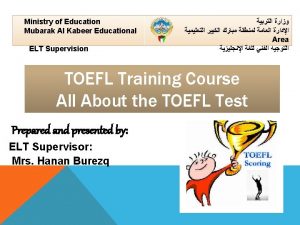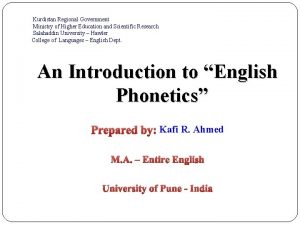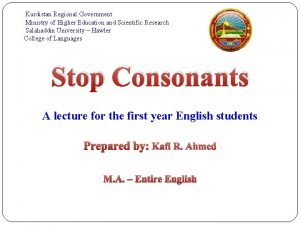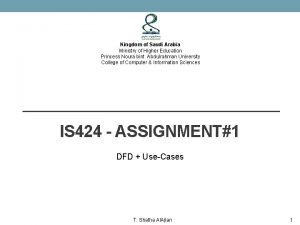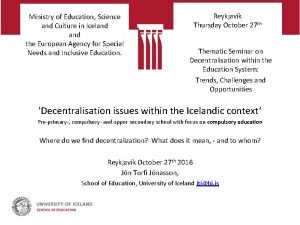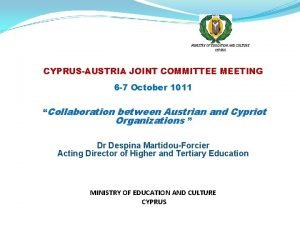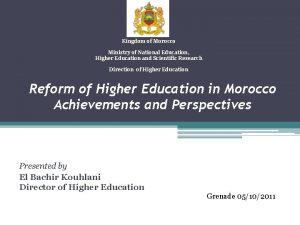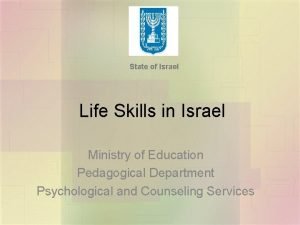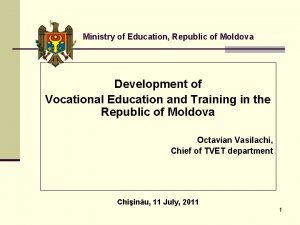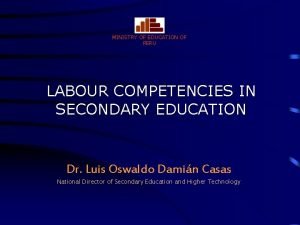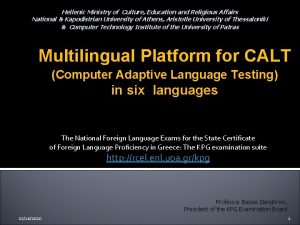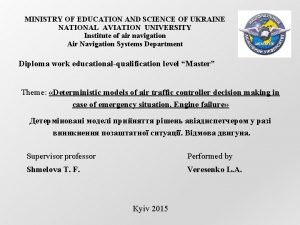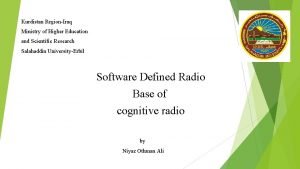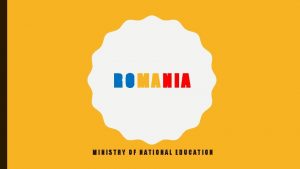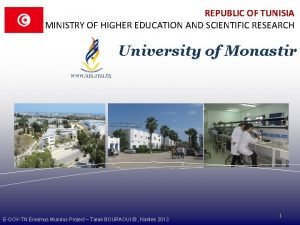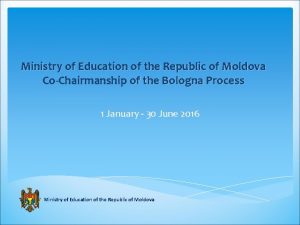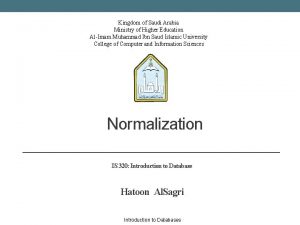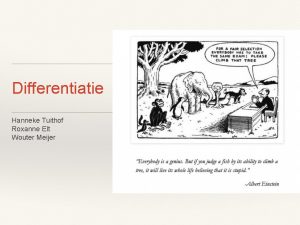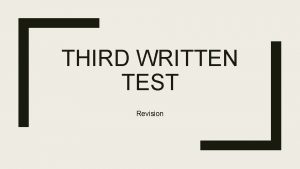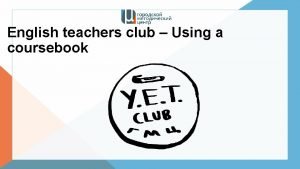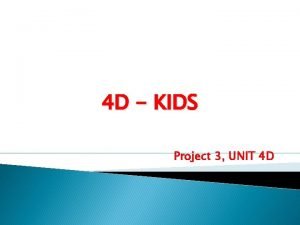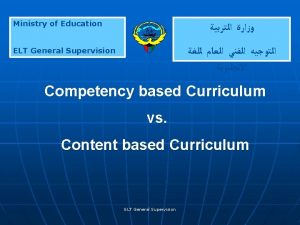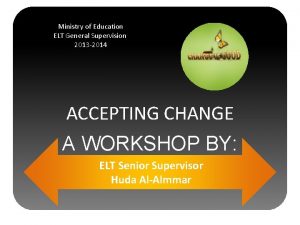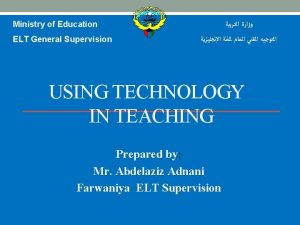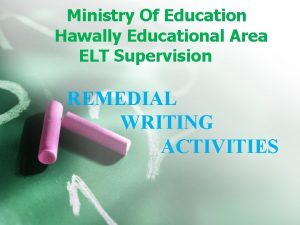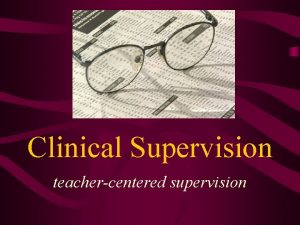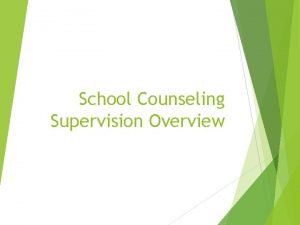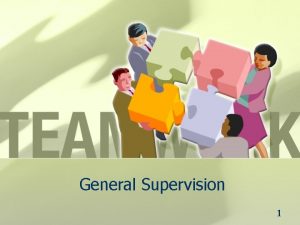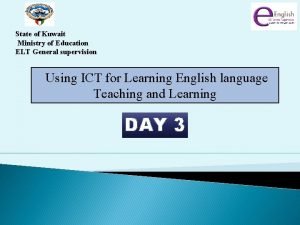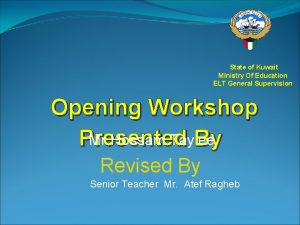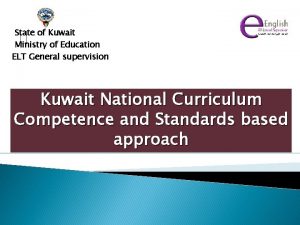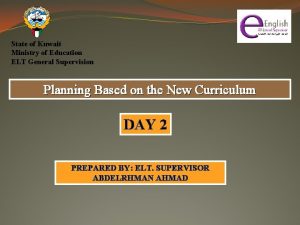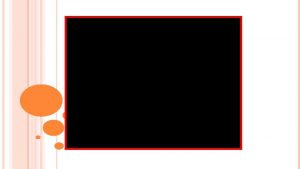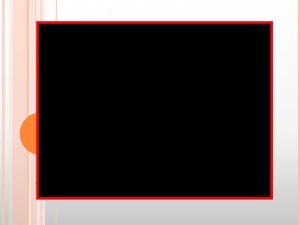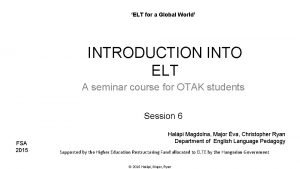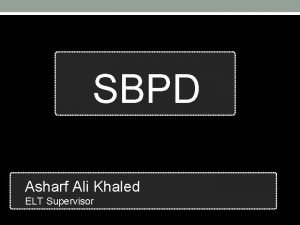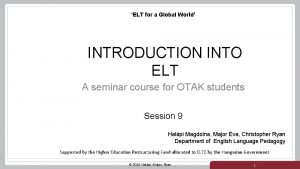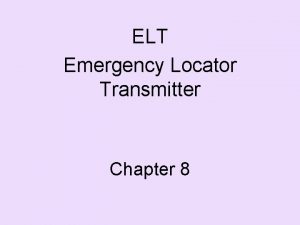Ministry of Education ELT General Supervision Ministry of













































- Slides: 45

Ministry of Education ELT. General Supervision

Ministry of Education ELT. General Supervision MISMATCHES BETWEEN TEACHERS' BELIEFS & WRITTEN FEEDBACK PRACTICE PREPARED & PRESENTED BY : ELT SUPERVISOR : MR. ABDUL HALIM HAMED GHANDAR

OVERVIEW - - Beliefs have an important impact on teachers’ feedback Own personal theories of teaching have negative effects on both teaching and learning process Identifying factors that contribute to effective feedback What aspects are to be considered in feedback 9 mismatches based on a case study Mismatches and assessment

Beliefs have an important impact on teacher's practices. As teachers are thinking beings who construct their own personal and workable theories of teaching. Teachers' beliefs and practices play a pivotal role in the classroom, since they have a direct bearing on the teaching and learning process. Giving feedback is such an arduous and yet important task for teachers.

Un-covering the beliefs that underlie teacher's practices can help identify the factors that contribute to effective feedback.


Although responding to students writing is an important and meaningful area of teacher's work, it's often described in negative terms, referred to as frustrating ( Ferries, Pezone, Tade, and Tinti 1997 ), grueling and anxiety-ridden( Stern and Solomon 2006), tedious and unrewarding ( Hyland 1990 ). Negative effects of Teacher feedback have been reported in the literature, such as frustration and confusion ( Mantello 1997 ), and as underachievement and under-expectation through unfocused marking.

Mismatches

1 - Teachers pay most attention to language form but they believe there's more to good writing than accuracy.

A great deal of teachers focus inordinately on language form in their response to student writing , some of them focus on organizational issues, others stress general comments on student writing. A few teachers concentrate on the whole essay including the organization and content. Teachers are really caught in a conflict between their formfocused approach to feedback and their awareness that there is more to good writing than accuracy.

2 - Teachers mark errors comprehensively although selective marking is preferred.

This type of feedback may be justified by teachers' concerns that if a large number of errors are indicated , students , especially the weak ones, won't be able to cope. Some teachers say that if students focus on too many things at a time they cannot learn as their language foundation is not too good. Another reason behind not responding to student writing selectively is the school policy that requires them to attend every single student error.

3 - Teachers tend to correct and locate errors for students but believe that through teacher's feedback students should learn to correct and locate their own errors.

In this case the feedback is direct, i. e. teachers indicate and correct errors for students. The great majority of teachers believed that students should learn to locate and correct errors. What might explain such discrepancy?

4 - Teacher use error codes although they think students have a limited ability to decipher the codes.

Teachers believe that students' ability to decipher error codes is limited, especially the weaker ones. Even though students understand the codes, they don't know how to correct the errors. It doesn't help if students aren't motivated. The reason for such a discrepancy is possibly because teachers think that error codes provide opportunity for students to think about the error types and do self-correction which is beneficial to their learning.

5 - Teachers award scores/grades to student writing although they are almost certain that marks/grades draw student attention away from teacher feedback.

All the teachers give student writing a score or grade. Interestingly though, teachers do not seem to have a great deal of faith in grades/scores as they think these divert student attention away from teacher feedback so much so that some students may even ignore it, especially because they are not required to revise and submit drafts for a better grade.

6 - Teachers respond mainly to weakness in student writing although they know that feedback should cover both strengths and weaknesses.

The reason for this mismatch can be explained by the error-focused approach to written feedback, which inevitably draws teachers' attention to weaknesses rather than strengths in student writing. There should be a balance between negative and positive comments on both sides of students' weaknesses and strengths.

7 - Teachers' written feedback practice allows students little room to take control although teachers think students should learn to take greater responsibility for learning.

In teacher's written feedback practice , they shoulder a great deal of responsibility , marking errors comprehensively, and doing error identification / correction for students. Students have nothing to do except rewriting the essay or the paragraph. they are not given the chance to asses themselves or to assess each other. They aren't even given the chance to think and no indication of developing responsibility for learning.

. 8 - Teachers ask students to do one-shot writing although they think process writing is beneficial.

According to the teachers, their written feedback is given to single drafts, as the student texts are performed as one-shot writing. however, most teachers believe in the benefits of process pedagogy, they know process writing is goo practice. one plausible reason for such a mismatch is that teachers do not have enough time to let students go through multiple drafting, as they need to cover more writing topics/text types to prepare students for examination. Teachers adopt a product-oriented approach although they are aware of the benefits of process pedagogy.

- 9 - Teachers continue to focus on student written errors although they know that mistakes will recur.

Teachers' written feedback is mainly error-focused. a great deal of teachers get started to express their concerns about the inefficacy of their feedback. Despite teachers' feedback, many students would make the same mistakes again. Despite such a realization, teachers continue to put a heavy emphasis on student written errors.

Assessment

Assessment Goals DIAGNOSIS (concerns a diagnosis of the learning acquisitions of students). PROGNOSIS (allows predictions of future achievements of students). We are interested in the diagnostic role of assessment for providing feedback concerning individual learning in order to ensure the student’s learning progress.

The main purposes of assessment - To generate the learning progress. - To measure this progress.

ASSESSMENT STATUS CO DISADVANTAGES ALTERNATIVES REASONS

1 - We use to compare learners to each other but this made comparisons more important than the actual learning so now each learner could be evaluated on what he or she can do in relation to the standards because this helps each child feel valued as a learner and builds on individual strengths.

2) We use to concentrate on what students could not or should not do but that this focus undermined the confidence of many students and that we could be more supportive of their accomplishments so now we should begin with what students can do, then consider their learning needs because this helps to develop confidence and gives a foundation for building and further developing their competences.

3) We use to use pencil/paper tasks as the main way of assessing and evaluating students but we might now know that this gave a limited view of what students could do so now we should encourage students to represent their learning in a variety of ways (show what they know) because this provides opportunities for more students to demonstrate their intelligence and to be successful learners.

4) We use to use marks for reporting students’ progress but the marks are dependent on teacher and parent interpretation and often focused on surface knowledge rather than on understanding so now we should use/add reports to describe students’ learning because they give a more detailed picture of what students can do and identify future learning goals

5) We use to exclude students from the assessment and evaluation process but this did not encourage the development of self-evaluation skills so now Students should be encouraged to take a more active role in assessing and evaluating their own progress because as students construct meaning of the world around them, this process encourages independent learning and a commitment to further learning.

BRIEF SYNTHESIS - Begin with what students can do, and consider their learning needs. - Give students the support needed to progress. - Relate the evaluation to standards of achievement. - Use reports to describe students’ learning. - Encourage students to take a more active role in evaluating their own progress.

Step 1: Identify the standards Step 2: Select an authentic task How to Create Authentic Assessments ? Step 3: Identify the criteria for the task Step 4: Create the rubric

Step 1: Identify the standards Standards, like goals, are statements of what students should know and be able to do. However, standards are typically more narrow in scope and more amenable to assessment than goals. “Students will be able to add two-digit numbers correctly. ”

Step 2: Select an authentic task Find a way students can demonstrate that they are fully capable of meeting the standard. The language of a well-written standard can spell out what a task should ask students to do to demonstrate their mastery of it.

Step 3: Identify the criteria for the task - Standard ; The student will be able to divide two-digit numbers correctly. - Task ; Calculate the given math problems without using the calculator and answer it in the board. Explain their answers. - Criteria ; The proper use of the step-by-step process in solving the problem. Correctness of the final answer. The way they explain and deliver the reason of how they arrive with the final answer.

Step 4: Create the rubric Once you have identified the criteria you want to look for as indicators of good performance, you next decide whether to consider the criteria analytically or holistically.

Conclusion The study has revealed a number of gaps between teachers’ beliefs and practice in written feedback, which teachers may or may not be aware of. While teachers in the study tend to attribute their practices to constraints imposed by institutional context and values, like exam pressure and a school policy that highly values error feedback, it is not certain whether these are real explanations for the mismatches or mere excuses that teachers use to justify their practices.

To probe the underlying reasons for their practices, teachers can be asked to explain, analyse, and unpack the issues pertaining to feedback so as to shed light on the incongruity between their beliefs and practice.

An ethnographical approach can be adopted to explore how the institutional and sociocultural context (see Hyland 2006), the student factor, the teacher factor, and other factors may impinge on teachers’ feedback practice. It would also be useful to provide opportunities for teachers to gather together in school-based professional development seminars, where they examine their current feedback practice, challenge their assumptions about feedback, and evaluate the effectiveness of their current practice.

 Elt supervision
Elt supervision General elt
General elt Elt supervision
Elt supervision Elt general supervision
Elt general supervision Mubarak elt
Mubarak elt Elt supervision
Elt supervision General supervision
General supervision Ministry of education serbia
Ministry of education serbia What is textbook
What is textbook Matriculation certificate
Matriculation certificate Ministry of education and research romania
Ministry of education and research romania Ministry of education armenia
Ministry of education armenia Ministry of higher education (afghanistan)
Ministry of higher education (afghanistan) Ministry of education
Ministry of education Ministry of education kurdistan
Ministry of education kurdistan Krg ministry of higher education
Krg ministry of higher education Krg ministry of higher education
Krg ministry of higher education Ministry of higher education saudi arabia
Ministry of higher education saudi arabia Ministry of education iceland
Ministry of education iceland Ministry of education and culture cyprus
Ministry of education and culture cyprus Ministry of national education morocco
Ministry of national education morocco Ministry of education
Ministry of education Ministry of education
Ministry of education Ministry of education peru
Ministry of education peru Secondary engagement programme
Secondary engagement programme Hellenic ministry of education and religious affairs
Hellenic ministry of education and religious affairs Ministry of education
Ministry of education Ministry of education and research romania
Ministry of education and research romania Ministry of education
Ministry of education Ministry of education and science of the russian federation
Ministry of education and science of the russian federation Ministry of higher education erbil
Ministry of higher education erbil Ministry of national education romania
Ministry of national education romania Ministry of higher education tunisia
Ministry of higher education tunisia Ministry of education moldova
Ministry of education moldova Ministry of education zone 1
Ministry of education zone 1 Ministry of higher education saudi
Ministry of higher education saudi Repakelt
Repakelt The direct method شرح
The direct method شرح Roxanne elt
Roxanne elt Noaa elt registration
Noaa elt registration Bound morpheme example
Bound morpheme example Language
Language Will + infinitive
Will + infinitive Okan elt
Okan elt Elt teachers club
Elt teachers club Project 3 unit 4
Project 3 unit 4
